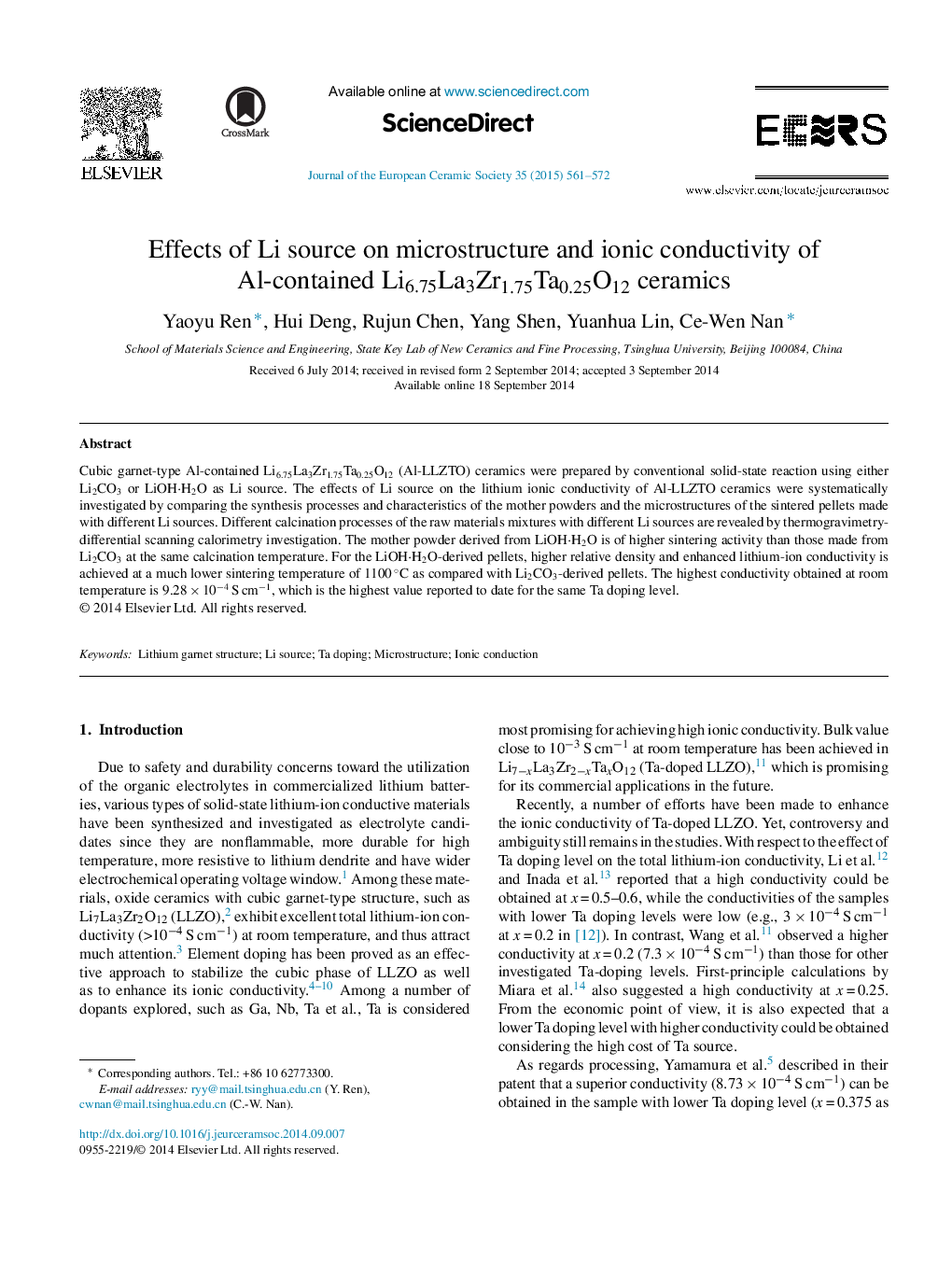| Article ID | Journal | Published Year | Pages | File Type |
|---|---|---|---|---|
| 1474628 | Journal of the European Ceramic Society | 2015 | 12 Pages |
Cubic garnet-type Al-contained Li6.75La3Zr1.75Ta0.25O12 (Al-LLZTO) ceramics were prepared by conventional solid-state reaction using either Li2CO3 or LiOH·H2O as Li source. The effects of Li source on the lithium ionic conductivity of Al-LLZTO ceramics were systematically investigated by comparing the synthesis processes and characteristics of the mother powders and the microstructures of the sintered pellets made with different Li sources. Different calcination processes of the raw materials mixtures with different Li sources are revealed by thermogravimetry-differential scanning calorimetry investigation. The mother powder derived from LiOH·H2O is of higher sintering activity than those made from Li2CO3 at the same calcination temperature. For the LiOH·H2O-derived pellets, higher relative density and enhanced lithium-ion conductivity is achieved at a much lower sintering temperature of 1100 °C as compared with Li2CO3-derived pellets. The highest conductivity obtained at room temperature is 9.28 × 10−4 S cm−1, which is the highest value reported to date for the same Ta doping level.
